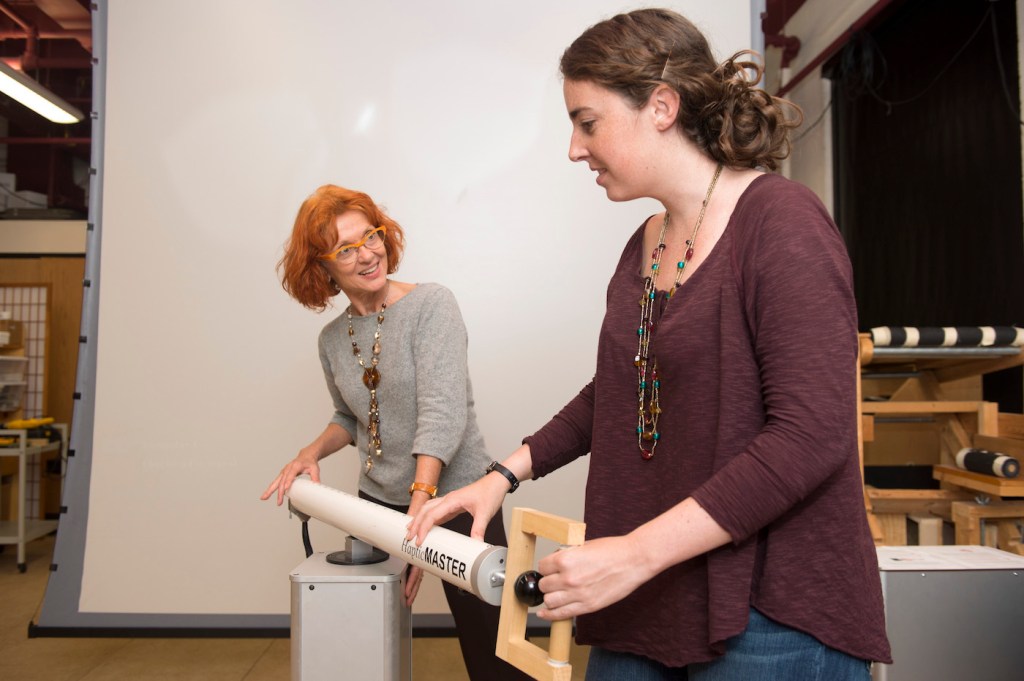Making moves: researchers study human movement to build better robots

Draw a figure eight in the air. It might feel like one swift movement. But in fact, the velocity of your hand and arm likely varies, traveling faster through the straight parts and slowing down during the curves.
This observation might seem inconsequential, but it’s precisely the sort of thing scientists and engineers need to consider when building robots—if people want to have seamless interactions with them.
Dagmar Sternad, professor of biology, electrical and computer engineering, and physics at Northeastern, is interested in better understanding how people and robots move independently and in tandem. In a recent study, she asked people to place their hand on top of a robot’s and follow along—without resisting—as the robotic arm drew a figure eight. If the robot controlled its velocity to match the way a human arm would naturally move, the experiment went smoothly.
“But when the robot would just go around with constant velocity, humans would resist at places where the robot would go too fast or too slow,” Sternad said. This seemingly small discrepancy in movement could be hugely important, depending on the context of the human-robot interaction.
Increasingly, robots are being developed to help humans complete a variety of tasks. For example, they may be used in a warehouse to help workers lift heavy loads or push packages around.
“If they lift a table together and the robot moved independently with constant velocity, without regarding velocity modulations, that would provide problems,” Sternad said.
It’s not difficult to imagine a scenario in which the interaction could quickly turn burdensome or dangerous. For example, another setting for which robots are being groomed is physical therapy rehabilitation centers. In the not-too-distant-future, robots could guide patients through movements as they recover from an injury, Sternad said. But if the robot doesn’t account for natural human velocity variations, “That would not afford a smooth interaction.”
Sternad’s Action Lab is unlocking these subtle facets of human movement with the goal of transferring that insight to the world of robotics. In other experiments, she’s looked at tasks requiring coordination and trajectory control that humans do quite well—such as bouncing a ball or filling a glass with water—but that are still complex challenges for a robot. These skills will be critical for robots to learn if they are to care for sick patients elderly people.
One way Sternad is helping to inform the development of better robots is through a project with Valkyrie, a 6-foot-2-inch, 275-pound humanoid robot developed by NASA. In collaboration with Taskin Padir, Valkyrie’s principal investigator and associate professor in the Department of Electrical and Computer Engineering, Sternad has been placing sensors on Valkyrie’s joints to record her whole-body motions. The sensors collect data as she walks around the room or moves her limbs in other ways.
There are only four robots like Valkyrie in the world. But Sternad wants other scientists to have the benefit of learning from the unique humanoid robot, so she’s planning to share the collected data widely.
“The idea is, as we make some of the data available to the research community, other labs that don’t have direct access to Valkyrie can start working, analyzing, and developing other algorithms to contribute to the knowledge base,” Sternad said.





